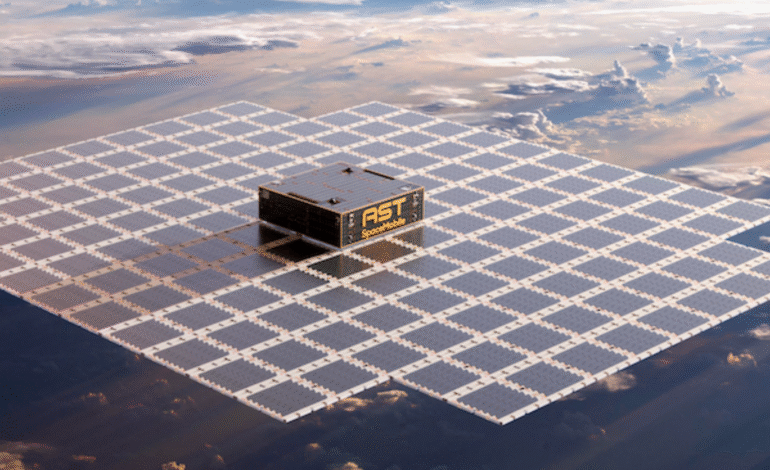ISRO to Launch AST SpaceMobile’s BlueBird Satellite in Late 2025

The Indian Space Research Organisation (ISRO) is preparing to conduct a major satellite launch in late 2025, carrying the 6,500 kg BlueBird Block 2 satellite developed by AST SpaceMobile, a U.S.-based satellite communications company. The mission will utilize ISRO’s heavy-lift Launch Vehicle Mark-3 (LVM3), further strengthening India’s growing presence in global commercial space operations and solidifying the strategic space partnership between India and the United States.
The launch of BlueBird Block 2 is aimed at enabling direct-to-smartphone satellite broadband connectivity, a technological leap that eliminates the need for specialized terminals. As the demand for global broadband connectivity grows, this mission serves as a landmark collaboration between two major spacefaring nations, underpinned by advances in rocket capability and a shared commitment to international cooperation in space.
The BlueBird Mission and Strategic Importance
AST SpaceMobile, headquartered in Texas, has developed a series of satellites known as BlueBirds to deliver broadband cellular service directly to unmodified smartphones around the world. The Block 2 series, including the 6.5-tonne satellite set to launch from India, will mark the beginning of AST’s full-scale commercial deployment.
The satellite will be launched from the Satish Dhawan Space Centre in Sriharikota using ISRO’s LVM3, a three-stage heavy-lift vehicle capable of transporting large payloads to low Earth orbit (LEO) and geosynchronous transfer orbit (GTO). The launch was initially slated for April or May 2025 but has been rescheduled to the third quarter of 2025 due to manufacturing delays and payload integration requirements.
AST SpaceMobile’s BlueBird Block 2 series is equipped with large phased-array antennas and advanced onboard systems designed to offer mobile broadband at data speeds of up to 120 Mbps. The satellite’s design incorporates a deployable array covering approximately 240 square meters, allowing it to operate as a space-based mobile tower, capable of voice, video, and data transmission.
The BlueBird satellite is expected to arrive in India for integration by September 2025. Once launched, it will form a vital part of AST’s proposed constellation aimed at covering unconnected and underserved regions worldwide.
AST SpaceMobile’s Broader Satellite Rollout
AST SpaceMobile has previously deployed experimental satellites, including BlueWalker 3, which provided proof of concept for its direct-to-cell technology. In September 2024, AST successfully launched five BlueBird Block 1 satellites aboard a SpaceX Falcon 9 rocket. These satellites successfully deployed their antennas by October 2024 and commenced preliminary operations.
Over the next two years, AST plans to deploy more than 60 BlueBird satellites, with contracts secured with multiple launch providers including SpaceX, Blue Origin, and ISRO. This diversified launch strategy reflects the company’s ambition to offer global satellite broadband coverage by 2026.
The Indian launch marks the first time a BlueBird Block 2 satellite will be delivered to orbit by a non-U.S. launch provider, highlighting ISRO’s increasing role in commercial satellite missions and international collaborations.
ISRO’s Commercial Space Leadership and LVM3’s Role
ISRO’s LVM3 has emerged as a key enabler of India’s aspirations in the global launch services market. Capable of lifting payloads up to 10 tonnes into low Earth orbit and over 4 tonnes into geosynchronous transfer orbit, the LVM3 (formerly known as GSLV Mk III) has a track record of successful missions, including the launch of the Chandrayaan-2 mission and multiple commercial satellite launches.
The upcoming launch of the BlueBird satellite represents one of the heaviest commercial payloads ever handled by ISRO. To accommodate larger and more sophisticated missions, ISRO is currently working on semi-cryogenic engine upgrades to LVM3, which will increase its payload capacity by approximately 25% while reducing cost-per-kilogram.
These enhancements will enable ISRO to compete more directly with other global launch providers, positioning India as a viable alternative in the competitive satellite launch industry.
Strategic Cooperation Between India and the United States
The BlueBird mission is a continuation of growing space collaboration between India and the United States. It follows the successful joint launch of NASA and ISRO’s Synthetic Aperture Radar (NISAR) mission, which lifted off earlier in 2025.
Officials from ISRO and India’s Department of Space have reiterated that geopolitical uncertainties or shifts in trade policy will not impact existing contracts. Despite previous concerns surrounding U.S. trade policy under former President Donald Trump, ISRO has confirmed that its agreements with American partners including AST SpaceMobile are progressing as planned.
This stability is seen as a reflection of the robust and mutually beneficial partnership between the two nations in space science, commercial ventures, and research.
Bharatiya Antariksha Station: India’s Space Station Vision
Parallel to its international commercial endeavors, ISRO is also making steady progress toward building its first indigenous space station, the Bharatiya Antariksha Station (BAS). This ambitious project aims to place a permanent, crewed research facility in low Earth orbit by 2035.
According to official sources, the station will be constructed in five modules, with the first module scheduled for launch in 2028. The complete station will weigh approximately 52 tonnes and will support three to four astronauts on a regular basis, with capacity for six during short-term missions.
ISRO plans to use its upgraded LVM3 or the future Next Generation Launch Vehicle (NGLV) to place the modules in orbit. The BAS will support a range of scientific activities, including microgravity research, materials processing, space medicine, and orbital manufacturing.
India has also signed a statement of intent with the European Space Agency (ESA) to explore potential collaboration on human spaceflight, docking technology, analog missions, and astronaut training. ESA’s involvement could lead to eventual crewed visits to the Indian space station, marking a significant milestone in India’s manned space exploration agenda.
Gaganyaan and Human Spaceflight Readiness
ISRO’s human spaceflight program, known as Gaganyaan, is closely aligned with the development of the Bharatiya Antariksha Station. The first uncrewed Gaganyaan test mission is scheduled for December 2025, followed by another uncrewed mission in 2026 and the first crewed mission in early 2027.
These missions will test critical systems including environmental control, life support, crew escape mechanisms, and orbital maneuvering capabilities. Technologies developed under Gaganyaan will also form the foundation for long-term human spaceflight missions to the Indian space station.
ISRO has already demonstrated key docking technologies through its SPADeX (Space Docking Experiment) initiative and has successfully tested fuel cell systems aboard its orbital POEM-3 platform. These developments mark India’s steady progression toward autonomous human spaceflight capability.
Technological Upgrades and Innovations
ISRO is undertaking multiple technological upgrades in parallel with its human spaceflight ambitions and commercial commitments. These include:
Semi-cryogenic Engines: Development of more efficient LOX-kerosene engines to replace existing Vikas engines for enhanced lift capacity.
Docking Systems: SPADeX will demonstrate autonomous docking between two satellites in elliptical orbit, paving the way for in-orbit assembly and refueling missions.
Fuel Cell Systems: The POEM-3 mission validated the use of hydrogen-oxygen fuel cells to generate electricity and potable water, key components for sustaining long-term space missions.
Artificial Intelligence in Operations: ISRO is also exploring AI integration for mission planning, real-time diagnostics, and autonomous spacecraft operations.
These advancements not only support ISRO’s core missions but also bolster its appeal as a global provider of advanced space systems.
A Defining Decade for Indian Space Aspirations
The upcoming BlueBird satellite launch represents more than a routine commercial mission; it is a statement of intent by ISRO and the Indian space sector. By hosting one of the most ambitious U.S. satellite projects to date and developing its own space station infrastructure, India is positioning itself as a spacefaring leader with comprehensive capabilities.
The continued expansion of Indo-U.S. cooperation in space, alongside ISRO’s commitment to innovation and self-reliance, signals a defining era for Indian aerospace. As 2025 draws closer to an end, the successful deployment of the BlueBird Block 2 satellite will stand as a pivotal achievement, both for AST SpaceMobile’s mission of global broadband and for India’s long-term space leadership.








1 Comment
[…] V. Narayanan, Chairman of ISRO, explained that this transfer shows how India is moving forward with space sector liberalization. […]
Comments are closed.